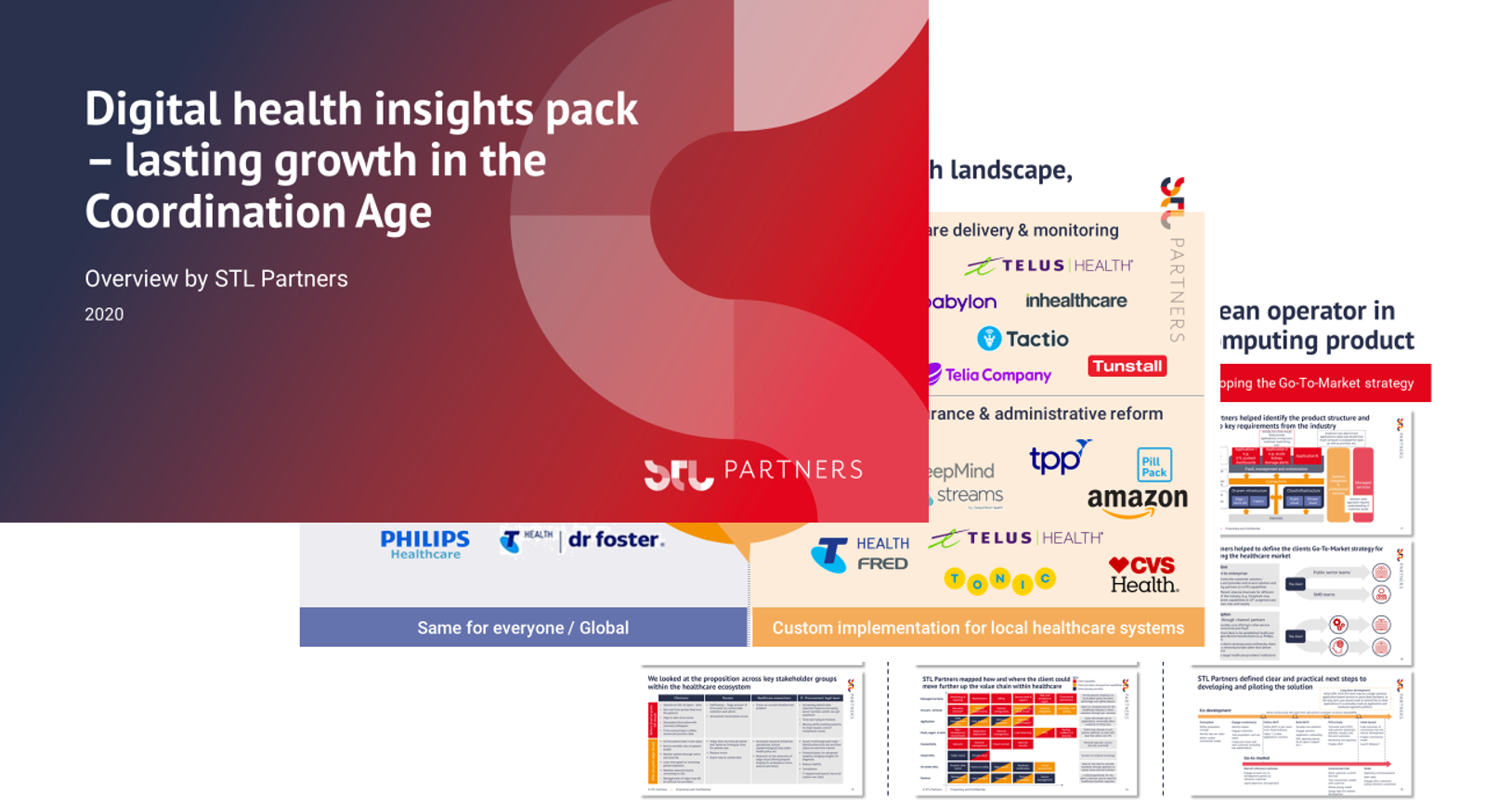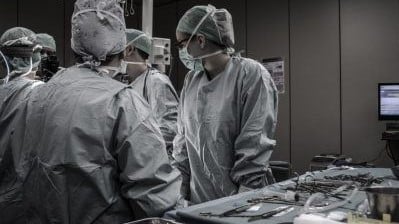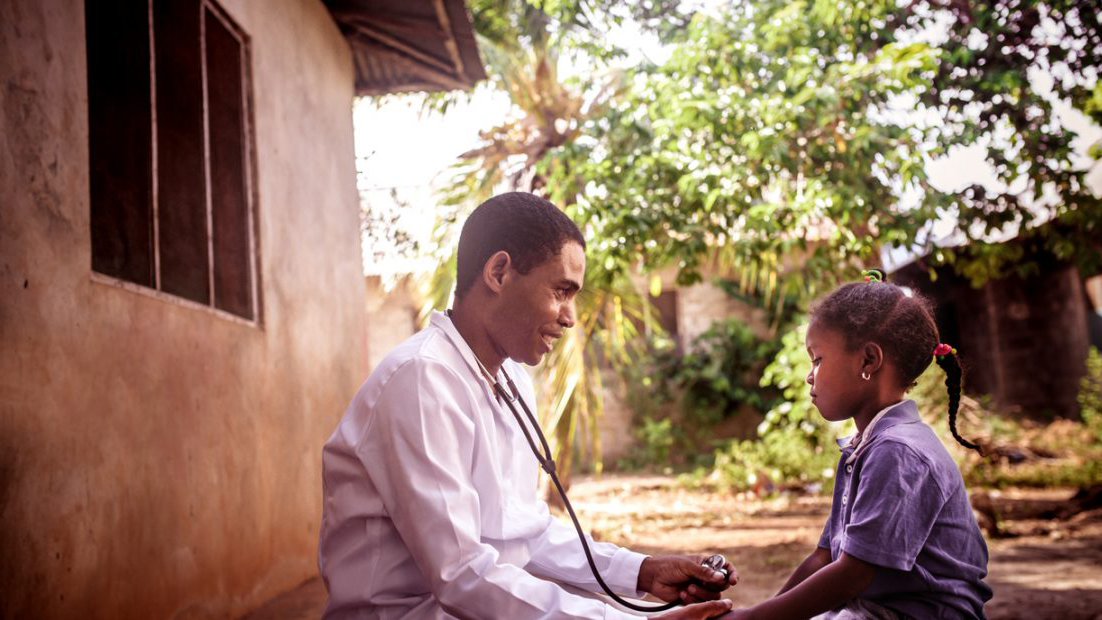10 5G Healthcare use cases transforming digital health
In this article we outline 10 5G healthcare use cases which, as healthcare providers look to the future of their digital strategies, will support the long-term transformation of the industry and the move towards digital health. Though individually some of these use cases can be delivered without 5G, once 5G standards are set and coverage is broad enough, 5G will act as a catalyst for adoption at scale by improving end user experience and decreasing existing barriers with current connectivity solutions.
In our recent article exploring how COVID-19 is changing digital health, we wrote about the explosion in telehealth use cases as healthcare providers, insurers, and governments look to meet the unprecedented demand and strain on medical services. Almost overnight, healthcare systems had to transform to manage both the acute needs of COVID-19 patients, while also managing the regular needs of existing patients.
Now, in the wake of the pandemic, healthcare providers need to assess which parts of their rapid digital transformation to continue to build and scale, as the onus shifts from acute care back to the management of chronic diseases and the backlog of patients who have gone without the treatments they require.
How 5G’s capabilities will impact healthcare
 10 5G healthcare use cases
10 5G healthcare use cases
5G enabled remote healthcare
- Remote patient monitoring
- Connected ambulance
- HD virtual consultations
- Video-enabled prescription management
Augmented reality/virtual reality healthcare use cases
- AR/VR assistance for the blind
- Distraction and rehabilitation therapy
- Remote expert for collaboration in surgery
- AR/VR training and education
5G-enabled on-site use cases
- Real-time, high-throughput computational processing
- Video analytics for behavioural recognition

5G-enabled remote healthcare
1. Connected ambulance
Some suggest that “connected ambulances” could help emergency services meet increasingly stringent targets and overall improve patient outcomes. A connected ambulance and its crew act as a means to collect and transfer information on the patient, either through wearables, sensors, or streaming of HD video/body cameras, back to hospital A&E departments while the patient is being transported. This way hospital staff have a better understanding of a patient before they arrive.
In some situations, specialists can be engaged to help guide paramedics through certain procedures or diagnostic assessments without the need to travel to the hospital, creating efficiencies across the emergency services.
Unlike other use cases, connected ambulances cannot be implemented without 5G’s capabilities. This is due to the:
- Lower latency 5G can bring – data and video must be sent in real-time to the hospital/clinicians as in emergency situations, split second decisions can have significant impact.
- High bandwidth of 5G will enabled video to be streamed live from emergency respondent body cams in the field without loss of quality or buffering
- Increased reliability and security of 5G
- Emergency services could also have their own private “slice” of the network due to 5G’s network slicing
2. High definition (HD) virtual consultations
Two-way HD video is used between the patient and a primary/secondary care professional to conduct, initial screening assessments, routine check-ups (which do not require physical procedures), therapy/rehabilitation sessions, and increasingly visual diagnoses (e.g. identifying dermatological conditions and symptoms). By conducting these appointments over the air, patients do not need to travel to see healthcare professionals and vice versa, reducing the burden on the patient and decreasing the cost of each appointment.
5G will enable two way HD virtual consultations to happen at scale when compared to other connectivity solutions through the promise of:
- Mobility versus in-home connectivity solutions such as Wi-Fi.
- Higher bandwidth versus existing cellular connectivity bringing the necessary consistent quality of service in the field.
- Increased reliability and security of 5G
3. Remote patient monitoring
Remote patient monitoring is seen as a key driver for more efficient and proactive delivery of healthcare services and chronic disease management. By using sensors, wearables and e-health devices, patient attributes can be collected and analysed without the need for patients to travel to primary care facilities and have a face to face appointment with a medical professional.
5G will enable remote patient monitoring to happen at scale when compared to other connectivity solutions through the promise of:
- Greater reliability and security of the service
- Increased capacity for number of connected devices per square kilometre
- Mobility versus in-home connectivity solutions such as Wi-Fi

4. Video-enabled medication adherence
Adherence to prescription regimes is a key challenge in the healthcare industry, especially with some elderly or mentally ill patients forgetting if and when they have taken their prescription medication. 5G can help tackle this problem through the use of video-enabled medication adherence, connecting qualified pharmacists and carers directly to the patient via video to ensure the correct precipitation and dosage is taken at the right time. An example of this use case in PAMAN, a video-enabled “Medihub” currently in engaged in a proof of concept in a UK 5G testbed.
5G will enable video-enabled medication adherence at scale through:
- Increased bandwidth enabling video to be streamed at high quality in real time
- Ease of installation of SIM based technology versus other solutions (e.g. Bluetooth/Wi-Fi).
- Increased reliability and security of 5G versus 4G
Augmented reality & virtual reality use cases in healthcare
5. Augmented reality and virtual reality assistance for the blind
Those with low, impaired, or even no vision can often be hindered in doing tasks that able-bodied individuals may take for granted, such as crossing the road, reading a website, entering a building etc. Using a 5G-enabled AR/VR headset or set of video streaming glasses, visually impaired individuals can be connected in real time to a live advisor who can guide the patient through certain activities in their daily life. Aira is a company looking to deliver such a service to its customer base.
5G will enable AR/VR assistance for the blind to occur at scale through:
- Higher bandwidth enabling higher quality video to be streamed to the guide.
- Low latency means the video can be streamed in real time to the guide which, in situations like crossing the road, would be significant. Furthermore, lag and jitter while using AR/VR headsets can cause the user to feel sea sick, and so low latency is essential for user experience.
- 5G’s mobility – though Wi-Fi meets the performance requirements, many of the activities for AR/VR assistance will happen on the move.
6. Distraction and rehabilitative therapy
Augmented reality and virtual reality can be used within a hospital or clinical setting to improve the experience of patients. An example of this is using AR/VR for distraction and rehabilitative therapy. In the case of distraction therapy, a child that is about the receive an injection can wear the headset (which through 5G could stream cloud based videos/applications of the child’s choosing in real time) to be transported to a new environment and distracted from the potential fear of receiving the jab. In the case of rehabilitative therapy, the headset could be used, for example, on an amputee to virtually overlay relaxation of the lost limb in order to relieve phantom limb pain.
This use case will require 5G’s capabilities because:
- Low latency and high bandwidth enable cloud-based streaming of applications and videos – this means information does not need to be downloaded and held on the device (reducing cost and bulkiness of the headset). It also provides the user with increased choice of application.
- Low latency also improves user experience by reducing lag and jitter, which can make patients feel nauseated (latency should be below ~20ms to reduce sea sickness for VR applications).
7. Remote expert for collaboration in surgery
In the context of 5G, a use case that is often mentioned for healthcare is “telesurgery”, where a specialist can perform an operation from a remote location. Though this use case would clearly require 5G’s capabilities, we believe it is over hyped and, at least for the foreseeable future, unrealistic for mainstream use (few doctors would be willing to perform surgery on someone using a remote controlled robotic device that they had not set up and checked in person).
A more realistic short-term opportunity is using a 5G-enabled AR/VR headset to allow a specialist to watch in on a surgery taking place in real time, guiding the in-person surgeon and commenting on what they see based on their own experience. This could also be extended to include haptics such that for example the in-person surgeon could receive vibratory cues for where and when to move from the remote guide, or the guide receives haptic information on the texture patients body in order to better assess the situation.
This use case will require 5G’s capabilities to be delivered:
- Low latency across a wide area – to enable real time communications and video streaming between the surgeons
- Reduce jitter to reduce nausea as well as for consistent haptic response
- High bandwidth to send extremely high definition video as would be required for remote surgery
- Reliability and security – drop in QoS could lead to loss of life

8. Augmented reality & virtual reality for training and education
Especially now in the wake of COVID-19, organisations across all verticals (including healthcare), are searching for new virtual ways to train and educate new staff and students. Using an AR/VR headset, either in the hospital, classroom, or even at home, could enable medical students and trainee specialists to perform practice procedures in a virtual environment (on virtual/non-real patients) and even collaborate on these virtual procedures in real time.
This use case will require 5G’s capabilities for:
- Low latency –to enable real time communications and video streaming between participants in the class
- Reduce jitter to reduce nausea of users
- High bandwidth to send extremely high definition video as would be required for the level of detail in a surgical process
- Reliability to provide a consistent quality of service, otherwise adoption for the use case would be prohibitively low.
5G-enabled on-site use cases
9. Real time high-throughput computational processing
In healthcare, there are many high-resolution images and files which may require high-throughput computational processing for diagnostics and design. With 5G, for example, after receiving an MRI or CT-scan, images can be sent in real time to where they need to be analysed to provide a diagnosis. Furthermore, there is an increasing use of in-silico high-throughput screening for more effective drug design in the pharmaceuticals industry. 5G can enable sending and analysis of molecular models and structures to the cloud to leverage the higher compute/graphic processing power and cheaper resource compared to a local high-end desktop. Workspot, Netgain, and Fordway are organisations leveraging Virtual Desktop Infrastructure to enable low latency, cloud-based computation in healthcare and life science.
- High bandwidth to send high resolution files in real time without buffering/delay
- Mobility versus fixed connectivity means machinery and equipment does not need to be tethered to a specific location
- Low latency for using cloud based processing means images/models can be rendered and iterated in real time
10. Video analytics for behavioural recognition
In hospitals, care homes, psychiatric centres etc. video analytics can be used in the hallways to identify patients who are behaving out of the ordinary, have had an incident such as falling, or are becoming a danger to themselves or others. Hosting the analytics on device using smart cameras can lead to prohibitively expensive hardware and so the analytics should happen in the cloud (or more likely using an edge compute to maintain data localisation and security).
5G can be used to enable this use case owing to:
- Increase in bandwidth allowing high definition video to be sent for processing and analytics
- Low latency enabling analytics to occur in real time and improving patient outcomes
- Security and reliability protecting patient data (e.g. through 5G slicing)
- Increased flexibility of the solution vs fixed connectivity – easier to add/remove cameras as SIM based-solution
This is the second installement in a series looking at healthcare use cases for emerging technology. We have previously looked at edge computing healthcare use cases and will be exploring IoT, AI, and blockchain healthcare use cases in our upcoming articles. For more information on the impact of 5G on the healthcare industry, read our report quantfying the benefit of 5G use cases for free.
If you’re working within the healthcare sector and you would like to understand if/how you might benefit from our insight, please do not hesitate to get in touch. Digital health is a key practice area for us and we would be keen to work with those exploring and pursuing the opportunities within the sector.
Digital health insights pack
This 24-page document will provide you with a summary of insights from our healthcare research and consulting work:
- Key trends in the healthcare industry
- The role for telecoms: applications and business models
- Strategies for success: where to start
- How STL Partners can support you
Request the free digital health insights pack by clicking on button below:
![]()
Read more about digital health
Webinar
Telcos in health webinar
In this session Amy Cameron and Yesmean Luk looked at the opportunities for telcos in health. As a growing industry, with a national focus and significant digitisation challenges, healthcare is an attractive vertical for telcos seeking to build new revenues beyond core communications services.
Research
TELUS Health: Innovation leader case study
Healthcare is an attractive vertical for telcos to address with digital solutions. Although many telcos have made attempts to capture this opportunity, TELUS stands out as an example of the value of a long-term commitment to healthcare. In this case study, we examine TELUS’ strategy in health, evidence of its success, and draw out lessons for other telcos



